First came the drought. Then, the floods. Now, the mice. Farmers in Australia are burning their own crops. They’re desperate to escape an epic plague infesting their hay. The mice are invading homes. They’re destroying crops. They even force the evacuation of prisons. They’re chewing through appliances, sofas, cars — and livelihoods.
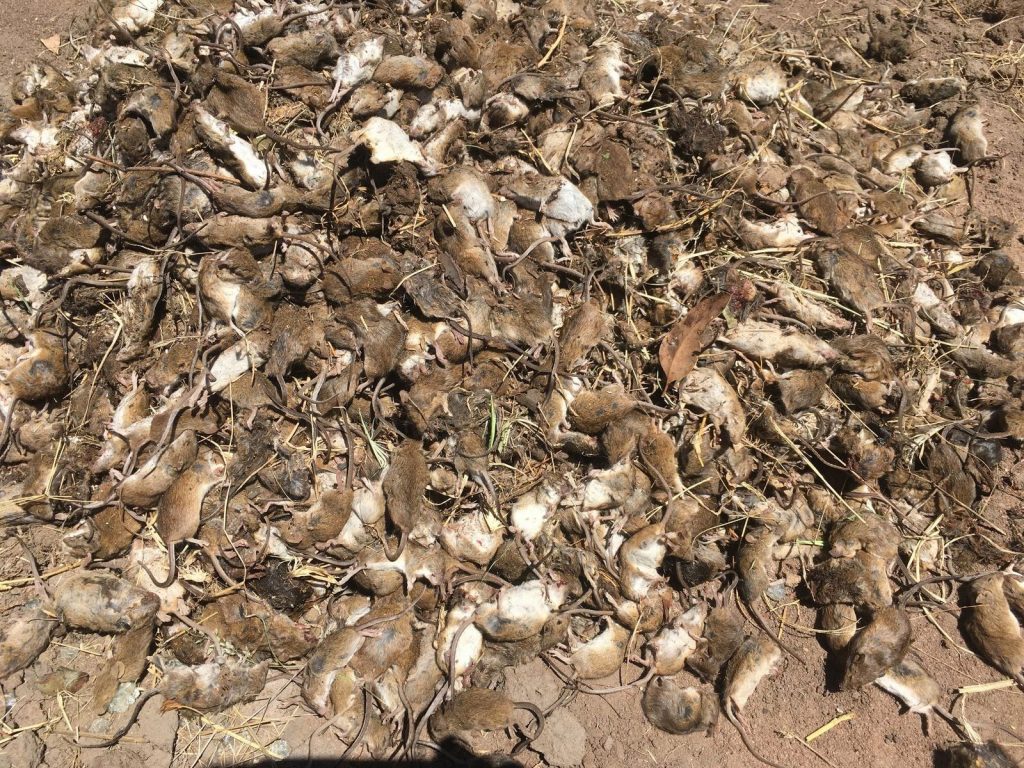
Colin Tink, 63, has been farming all his life and has never experienced a mouse plague like the one ravaging Australia’s eastern grain belt. Nor a drought like the one that preceded it, which turned fertile crop areas into dust bowls.
When the rains finally came last year, Tink thought his fortunes were changing.
The rain led to bumper crops through the spring and summer months (September to March in the Southern Hemisphere). Silos are overflowing with grain. And barns are piled high with hay. Tink grew enough hay to feed his cattle for two years.
Then the mice arrived. Millions of them. There are so many that even a prison had to be evacuated!
The vermin burrow deep into his hay. What they don’t eat is ruined anyway as their urine trickles down through the bales. The smell is acrid. It sticks in your nose and lingers on your clothes.
“It breaks your heart a bit,” Tink said. “We’re back to square one.”
Not one to give up, Tink recently fashioned a giant mouse trap out of a shipping container he uses to roll out grain for his cattle. He lures mice into the container by scattering grain on the floor.
Then, Tink, or his 5-year-old grandson, Jock, sweep the mice with a broom toward a pool of water positioned at the open end of the container. The rodents hurtle into the water. Trapped by a thin layer of dishwashing liquid, they quickly drown.
On the first evening, they caught 7,000 mice. The next night it was 3,000. Now, they’re averaging about 1,000 a night.
“We won’t beat ‘em but we might slow them down a bit,” Tink said.
The makings of a farm disaster
Australia suffers a mouse plague every 4 to 10 years or so. Some older farmers recall an infestation during the 1970s in which the ground felt as if it was moving, it was so thick with mice.
One contributing factor is changing farming practices. To maintain moisture in Australia’s arid soil, farmers are sowing new crops directly onto the old stalks that were left in the ground.
That means mice have more places to shelter — and have more food.
Breeding machines
Mouse researcher Steve Henry calls mice “breeding machines” because of how fast they reproduce. They typically start procreating at the age of six weeks.
After three weeks of pregnancy, a litter of up to 10 mice is born. The original mice will continue breeding, with no gap in between pregnancies.
Four months later, some pups are mature and have bred, giving birth to the first litter of grand pups. There can now be up to 90 mice plus the original two.
Eight months later, roughly the length of a breeding season, the original pair of mice can generate about 500 rodents.
But this is only from one pair of mice. When looking at just four pairs, for example, the total number goes up to 2,000. It soon adds up. Into the millions.
Dangerous napalm-like bait and viruses
The New South Wales government has secured 5,000 liters (1,320 gallons) of a deadly bait called bromadiolone. Scientists worry the poison may inadvertently kill other species — wedge-tailed eagles, owls, snakes and goannas (large lizards) that are feeding on the abundant mouse prey.
Mouse have already been found in stomachs of fish…
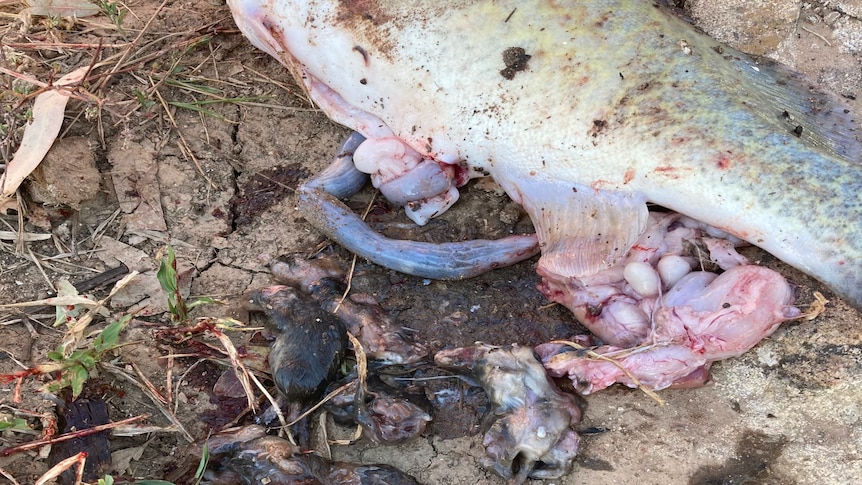
And hundreds of birds have been found dead after eating poisonous baits (most probably)…
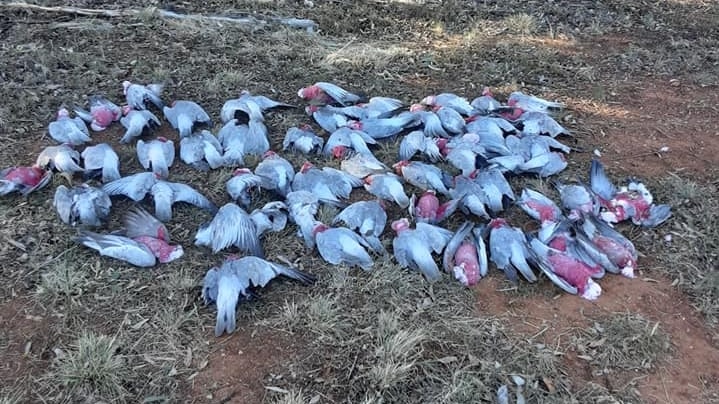
The mice also carry viruses that are potentially deadly to humans. Health authorities in Queensland state say the number of cases of leptospirosis — a flu-like illness that can lead to meningitis, kidney failure, bleeding and respiratory complications — have almost doubled in 2021 compared with this time last year.
Call in the mouse whisperer
With a shortage of traps, farmers have had to come up with their own systems to catch mice.
They’re crafting makeshift traps out of barrels and buckets. They’re laying down treats to tempt the mice to scuttle to their doom.
Some farmers have enlisted the help of experts like Henry, a government scientist who roams the country advising people on how to deal with the rodents.
In Coonamble, west of Sydney, last month, Henry inspected a 3,000 bale haystack — worth roughly $93,000 at current prices — that had been destroyed by mice. In a drought, the straw would fetch twice that, he said.
“When I wake up in the morning I am talking about mice and then when I go to bed I am still talking about mice,” he said.
At the Royal Hotel in Yeoval, about 200 miles west of Sydney, the publican, Mark Iles, said he was catching mice in his bare hands a few weeks ago as they scampered across his bar.
The worst smell ever
Greg Younghusband is a 40-year-old farmer near Gilgandra, about 270 miles west of Sydney. In dealing with the infestation, he has had to burn his own crops, and set up scores of traps.
One Saturday about a month ago, things got so bad that Younghusband had to send his wife and daughters away to a nearby town for the weekend. The mouse invasion was too much to bear.
They were in his shed. They were in the house. They destroyed his washing machine, dryer and two refrigerators. They chewed through his couch, his coffee machine and his daughter’s bed sheets. They were under the oven.
He could hear them in the walls. He also smelled them. The smell of death. Everywhere.
“You can’t get rid of the smell because they die in the walls. They die under the stove,” Younghusband said. “It’s the worst smell you’ve ever smelt. It’s unbelievable.”
He armed himself with 40 traps and between 2 p.m. and 2 a.m. he caught 450 mice, before giving up and going to bed. “I’d unload a trap and bait it again and as soon as I turned away it would go off again.”
One recent evening, Younghusband lit a fire under about 130 hay bales that had been destroyed by mice and stood back to watch, beer in hand, as flames lit up the night sky. He estimates he has lost about 1,500 bales so far.
Normally a mouse plague will end apocalyptically, according to Henry, as the population grows too big to support itself. Riddled with disease and running out of food, the vermin turn on each other, starting with the sickest and weakest.
He worries that if temperatures don’t drop sharply enough over the winter, many will survive the cooler months, setting up for an even more explosive outbreak next spring. [WP]
Now subscribe to this blog to get more amazing news curated just for you right in your inbox on a daily basis (here an example of our new newsletter).
You can also follow us on Facebook and/ or Twitter. And, by the way you can also make a donation through Paypal. Thank you!
You should really subscribe to QFiles. You will get very interesting information about strange events around the world.


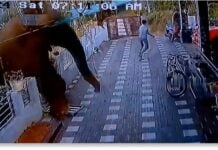

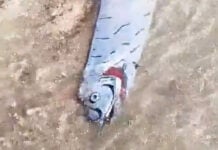








You totally forgot the spiders.
I’m telling you, mice are a plague. We have bullsnakes out here. Whenever I catch one, I toss him in the garage. I even have put the snakes in my old musclecar.
I’ve made mass killing traps. 104 confirmed kills in a month.
Mice carry plague. Use the grabber tool, and burn them in the fire pit.
The broadcast poisons will kill other creatures, so I avoid those, but the problem in Australia is severe.
One trick with poisons which can mitigate damage to friendly creatures. Get a 4″ diameter PVC pipe. Cut it to 18″ in length. Fasten chicken wire to one end, so mouse must enter the other side. Fasten bait stick to the inside of the chicken wire (use bale wire) inside the tube. Mice go inside, nibble bait, leave, and then you see them walking around all drunk looking. Walk over and smash them with the bat, or I use a pokey stick.
I put an ice pick on the end of a shovel handle. Then take the pokey stick mice, and use your knife to flick them off the pokey stick, and into the fire pit.
Burn those devils!
I planted an apple tree on my old dog’s grave two weeks ago. Well, the bastard mice climbed up, and ate every leaf already. I even have a “critter corral” around each of my fruit trees. Keeps rabbits and rats out, but those teeny field mice will get through. So, now I have to lay out about 20 mice traps around the stalk, like land mines.
I’ve done it before in problem areas with heavy mousetivity. You wake up and find a pile of them. You don’t need to even bait the land mine style traps. When they rove in bands, and strip leaves off new trees there’s hundreds out in Spring. It’s obvious.
We have kangaroo rats, Norwegian rats, field mice, and deer mice with those Homobama ears.
Best thing to have for a barn is a pellet rifle too. You can thwack ’em, and not blow through walls like normal firearms. I recommend Weihrauch or Air Arms brands. Spring-piston or PCP.
PCP air rifles are good for larger varmints at longer distances, like jack rabbit. Airforce Air rifles can be used on even larger varmints (coyotes), and very effective too. Quiet, and deadly. Pinpoint accuracy, so shot placement is usually perfect. Temple, ear, eye shots. Anchor those varmints.